#Paneuropa
Text
transItalia? No one told me Italy is trans!
0 notes
Text
EL PLAN KALERGI:
El genocidio de todos
Los blancos.
"El hombre futuro será de raza mixta. En cuanto a PanEuropa, me gustaría ver una mezcla euroasiática-negroide con grandes variaciones en los tipos de personalidad. Los judíos asumirán las posiciones de mando, ya que la Providencia (Dios) ha dado a Europa una raza superior de nobleza llamada Judíos.
Las razas blancas de Europa deberían ser destruidas y sustituidas por una raza de negroides euroasiáticos que pueden ser fácilmente controlados por nuestra élite dominante".
-Conte Richard Von Coudenhove-Kalergi
Fundador y Pres. de la Unión Paneuropea durante 49 años Escrito en su libro “Praktischer Idealismus” 1924
Tal vez si nos despertamos antes, ni siquiera habrían empezado.
Las cabezas pensantes, (consplotistas)
Lo han dicido durante años ...
https://t.me/+x-mvFpTSNZ8yYTg0

2 notes
·
View notes
Text
Il conte Richard Coudenhove-Kalergi
Il conte Richard Coudenhove-Kalergi, nato nel 1894 a Tokyo e morto nel 1972 a Klosterneuburg, in Austria, è stato una figura chiave nella storia europea del XX secolo. Questo visionario austro-giapponese ha dedicato gran parte della sua vita alla promozione di un'Europa unita e all'elaborazione di teorie che avrebbero avuto un impatto significativo sull'integrazione europea. Purtroppo, le sue idee sulla collaborazione in Europa sono state talvolta strumentalizzate.
Il conte kalergi: ambasciatore di pace
Il conte Richard Coudenhove-Kalergi proveniva da una famiglia aristocratica e multiculturale. La sua madre era giapponese e suo padre austriaco, e questa diversità culturale influenzò profondamente la sua visione del mondo. Dopo la devastazione della Prima Guerra Mondiale, Kalergi si preoccupò profondamente della pace in Europa e cercò modi per prevenire futuri conflitti.
Nel 1922, fondò la "Paneuropa", un movimento che aveva come obiettivo l'unità europea e la cooperazione tra le nazioni europee per evitare guerre future. La "Paneuropa" diventò un'organizzazione influente e ricevette il sostegno di molte personalità di spicco dell'epoca, tra cui Albert Einstein e Thomas Mann.
Le Teorie di Kalergi sull'Integrazione Europea
Una delle teorie più influenti del conte Kalergi fu la sua idea di una "Unione Europea" o "Stati Uniti d'Europa". Kalergi credeva che l'Europa dovesse superare le divisioni nazionali e promuovere l'unità politica, economica e culturale tra le nazioni europee. Nel suo libro del 1923, "Paneuropa", delineò dettagliatamente questa visione e sottolineò l'importanza della cooperazione europea per garantire la pace e la prosperità del continente.
Le idee di Kalergi influenzarono notevolmente le discussioni sull'integrazione europea nel dopoguerra. Dopo la Seconda Guerra Mondiale, l'Europa era stremata dalla distruzione e dalla divisione, e molte persone vedevano nell'idea di Kalergi una strada verso la ricostruzione e la stabilità. Le sue teorie fornirono una base concettuale per l'istituzione della Comunità Europea del Carbone e dell'Acciaio (CECA) nel 1951, considerata uno dei precursori dell'Unione Europea moderna.
Il conte Kalergi ricevette il Premio Carlo Magno nel 1950 per il suo contributo alla causa dell'unità europea. Questo premio onorerà il suo impegno per la cooperazione tra le nazioni europee e il suo sogno di un'Europa unita.
Il piano Kalergi
Interpretazioni errate e strumentalizzate delle teorie del conte austro-giapponese hanno portato alla nascita di quello che viene comunemente definito "piano Kalergi". La teoria del "Piano Kalergi" afferma che Kalergi avrebbe previsto l'immigrazione di massa in Europa come mezzo per creare una popolazione mescolata e omogenea, che sarebbe stata più facilmente governabile e avrebbe portato all'eliminazione delle identità nazionali e culturali. Questa visione, secondo i sostenitori della teoria, sarebbe stata sostenuta dalle élite globali per consolidare il loro controllo sul continente europeo.
il "Piano Kalergi" come viene spesso discusso oggi è ampiamente considerato come una teoria del complotto senza fondamento. Le affermazioni secondo cui Kalergi avrebbe previsto l'immigrazione di massa o avrebbe cercato di eliminare le identità culturali europee non sono supportate da prove concrete o dai suoi scritti originali.
In copertina foto di 👀 Mabel Amber, who will one day da Pixabay
Read the full article
0 notes
Video
Вдовец - комедия Италия 1959 Альберто Сорди, Франка Валери, Ливио Лоренцон
Альберто Нарди - молодой человек, полный энтузиазма, стремится к большому бизнесу, но не имеет возможностей, необходимых для его успешного осуществления. В результате своего опасного желания, Альберто часто попадает в серьезные неприятности и вынужден прибегать к помощи своей жены Эльвиры, богатой и мудрой женщины. Но однажды Эльвира, устав от безумства мужа, отказывает ему в любой помощи.
#комедия #авантюра #киноклассика
Выпущено: Италия, Cino del Duca, Paneuropa
Режиссер: Дино Ризи
В ролях: Альберто Сорди, Франка Валери, Ливио Лоренцон, Нандо Бруно, Руджеро Марки, Гастоне Беттанини, Марио Пассанте, Энцо Петито, Нанда Примавера, Розита Пизано, Альберто Рабальяти, Марио Чианфанелли, Карло Ди Маджио, Игнацио Дольче, Анджела Луче
Награды: Венецианский кинофестиваль 1954 г. Номинация (1):* "Золотой лев" (Луиджи Дзампа)
0 notes
Text
Der Entdecker Europas
Vor 100 Jahren formulierte Richard Coudenhove-Kalergi jene Vision, die einige Katastrophen später zur Einigung Europas führte. Der Paneuropa-Gründer selbst blieb ein privater Staatsmann.
https://www.die-tagespost.de/kultur/der-entdecker-europas-art-233676
0 notes
Photo

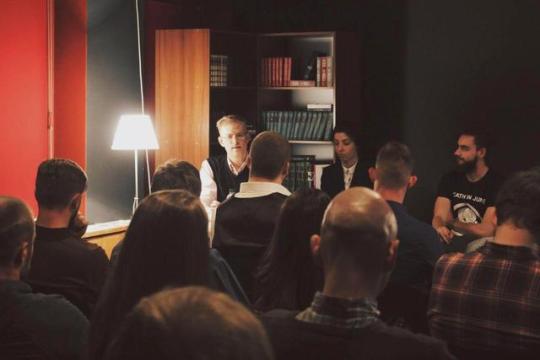

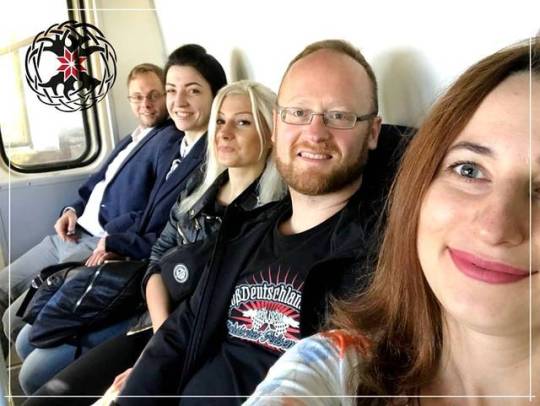
The Azov Movement in the West: achievements in 2019
Despite the fact that the official agenda of National Corps is a course towards Intermarium (Adriatic-Baltic-Black Sea Union), the years 2018 and 2019 were marked not only by regional events of the Intermarium Support Group, founded by Andriy Biletsky, Leader of National Corps, but also by popularization of our project in Western Europe and establishing of cooperation with both friendly Western European parties and those influenced by pro-Russian lobbyists. Along with it, we find sympathizers of Central and Eastern European Union among political forces and media platforms of the United States.
Having engaged in our activities, we adhere not only to the principle of paneuropeanism and alternative universalism, which shall prevent us from regional isolationism in the 21st century. Nor solely to the possibility (yet remote possibility) of the alternative of the EU all-European integration based on Central and Eastern Europe in case of growing animosity and decentralization of Europe.
It is a high time to admit that pro-Russian threat in Europe is tied not only with right-wing populists and “radicals”. After all, such influential right-populist parties like Polish PiS (Law and Justice) and Estonian EKRE (Estonian Conservative People’s Party), which lined up a fifth of seats on parliamentary elections, assume anti-Kremlin geopolitical attitude. Furthermore, namely these parties: both EKRE or Latvian coalition party “National Alliance” – are actual and potential Intermarium Support Group partners.
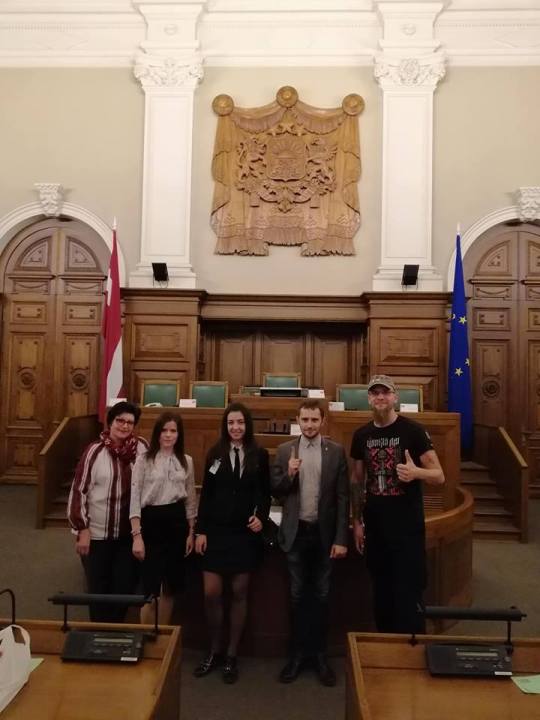
The problem is of another kind: not only a potentially pro-Russian coalition gathers in the European Parliament around the Italian Lega and German AfD – official Berlin, an economic leader of the EU, gradually weakens its resistance against Nord Stream 2, the pipeline which shall be built in circumvention of Ukrainian territory and rests on not only Russian and German but also Austrian, Danish and French funds. Following its own interests, neoliberal European Union persuades Ukraine to “conciliate” with the Russian Federation, which, in its turn, contradicts the interests of the US and some Central and Eastern European Countries only – again, “right-populist”.
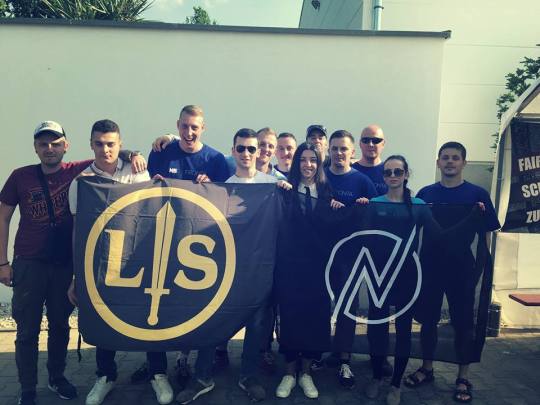
Under such conditions, it is important to prevent the Intermarium Support Group’s activites from deceleration, especially in the light of electoral success of the Finns Party, The Swedish Democrats, Danish People’s Party and other parliamentary forces of the region, which are currently either in the danger zone, or already cooperating with pro-Russian anti-immigration colleagues from Western Europe. Furthermore, given the lack of political unity among such parties, it is worth to give a due time alternative for those willing to think strategically and to avoid the fate of Putin’s fan club.
However, it is no less important to multiply our informational presence in Western European and American informational field via cooperation with “pro-Ukrainian” organizations and even their separate structures.
The starting point of informational expansion of the Azov Movement in the Western European field shall be considered to the Paneuropa Conference, which took place 28 April 2017 in Kyiv under the auspices of all-European Reconquista movement founded in 2015 on the back of mass foreign volunteer support in the National Liberation War in the East of Ukraine. This conference, dedicated to the idea of the alternative to European integration and geopolitical cooperation, gathered representatives of French, Italian, German, Swedish, Croatian, Polish, Lithuanian, Latvian and Russian emigrational political forces supporting a persistent course towards the creation of a sovereign Paneuropean confederation.

On October 15, 2018, the second Paneuropean conference was held in Kyiv, which was visited by local political forces, but also by speakers from Italy, Germany, Norway, Sweden, and the US. Similarly to the constituent conference, it included both the political, party element and the metapolitical component represented by Western intellectuals and bloggers associated with the Third Way, identitarian movement, French New Right (Nouvelle Droite) and American Alt-Right. Both conferences have gathered such prominent Western pro-Intermarium metapolitical thinkers like Gabriele Adinolfi, Pascal Lassalle, Marcus Follin (The Golden One), and Greg Johnson.

Active expansion of the Azov Movement into Western geopolitical and metapolitical sphere has begun with the participation of its representatives Victoria Polunina and Olena Semenyaka in the paneuropean congress named REGeneration Europa, which was organized on May 11-12, 2018, in the German town of Riesa by a youth branch of NPD, Junge Nationalisten. Though a marginal pro-LDNR Russian group was also represented at the conference, which provoked the pro-Ukrainian wing, it was the first mass Western European event marking the start of the further Azov “tour” across Western Europe on the invitations from the interested in the prospects of our cooperation.

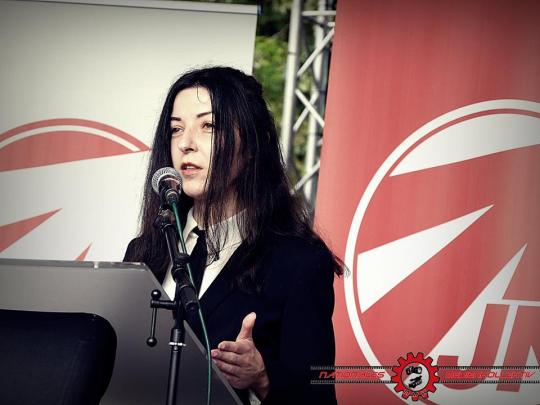
Next year, in spite of a fact that the NPD party has a split on the question of a military and geopolitical conflict between Ukraine and Russia, its youth branch took part in the second Paneuropa Conference in Kyiv and already on February 15-16, 2019 international secretary of National Corps Olena Semenyaka accepted the invitation of the NPD in Saxon Switzerland and the metapolitical center Haus Montag to speak at the event in Pirna in the course of which she described the history of the Azov Movement, the next day after the march in memory of victims of Dresden bombardment.
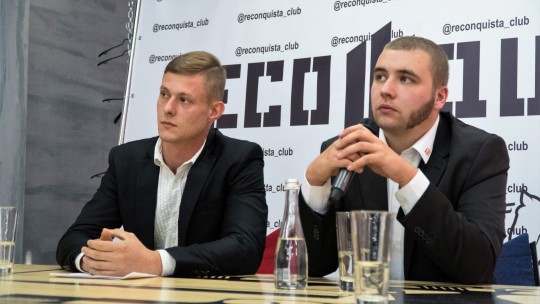
Among all described projects of the Azov Movement, the most challenging, but promising one is the geopolitical program of National Corps: Intermarium defense union as a platform for the alternative to the EU sovereign Paneuropean union. The false rivalry of the West and the Russian Federation creates the unique chance for the intended “buffer zone,” Eastern Europe, to become the center of the restoration of the all-European geopolitical subjectivity.
Moreover, this event was the first in the cycle of events within the framework of the «Ukrainian Year» in Germany, on the initiative of Thomas Rackow, the author of the charity German-Ukrainian-Norwegian Kraftquell (Source of Power) project aimed at organizing the vacation for veteran Ukrainian families in Germany and Norway as a sign of the solidarity of the European family with the belligerent Ukraine. He announced this project during the Paneuropa Conference II in Kyiv and on completion of the speech by Olena Semenyaka in Pirna.

In addition, namely on his initiative, Olena visited the annual convention of autonomous Norwegian nationalists in Eastern Norway who were interested in the geopolitical program of National Corps and supported the Kraftquell project.

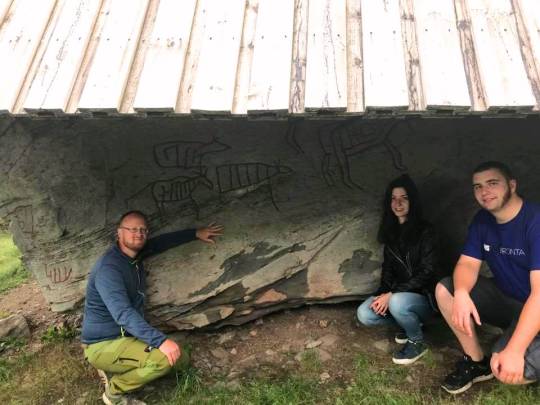
In June 2018, Olena Semenyaka also delivered a speech to the audience of Flamberg Club, the identitarian metapolitical center in Halle, within the framework of an event entitled “Ukrainian Evening: geopolitics, ideas, prospects”. She revealed the basis of Ukrainian state building, identity, the conflict with Russia, history and structure of the Azov Movement and the geopolitical project of Intermarium.
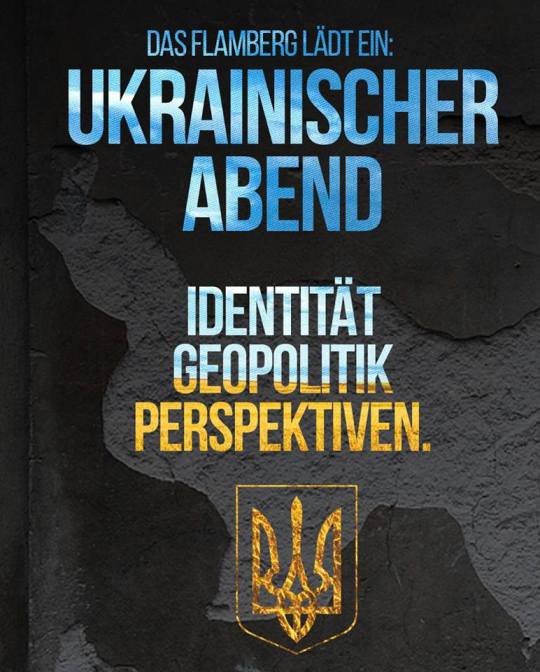
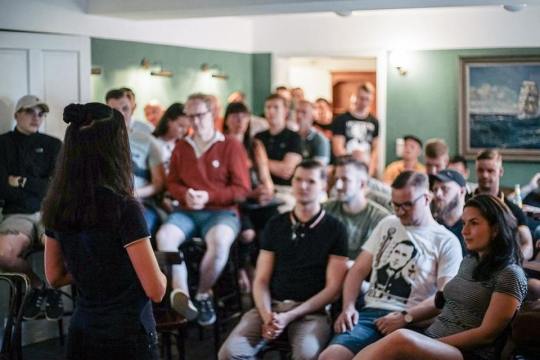
As soon as 3-5 of August 2018, Olena Semenyaka also delivered a lecture at the first Jungeuropa Forum organized in Dresden by Jungeuropa Verlag, the friendly publishing house of identitarian Third Way literature. Olena described to German and Austrian identitarians the geopolitical, cultural and philosophical foundations of Intermarium.
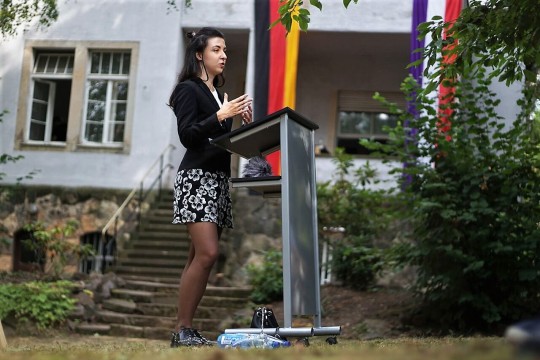
June 7, 2018, Olena Semenyaka revealed the metapolitical strategies of the Azov Movement at the cultural and political event entitled “The Youth Storms” in Kirchheim, Thuringia on the invitation of the German party Der III. Weg (Third Way), a long-time ally of the Azov Movement, the first ones who united with the German branch of the Reconquista Movement in their efforts to destroy the information blockade around the fight of Ukrainian patriots.
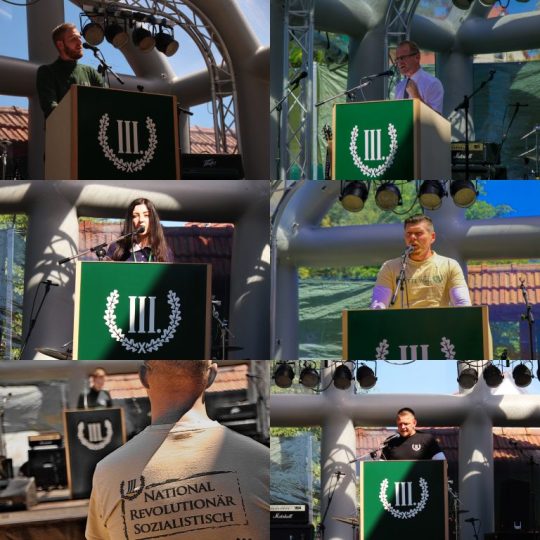
In the wake of the Third Conference of the Intermarium Support Group in October 13, 2018, which, among others, was attended by the representative of the Academic Legion Project of the Ministry of National Defense of Poland Damian Duda and Croatian Armed Force General Brigadier Bruno Zorica, right on February 15-16, 2019, Eugene Vriadnyk, combat veteran of the Azov Regiment, founder of Plomin publishing house, delivered a speech on his vision of archeofuturistic future of Central and Eastern Europe at the Prabudimas Conference in Vilnius, as well as took part in a torchlight procession in honor of the anniversary of Lithuania’s independence, which were organized by the Kryptis ethnofuturist association.

January 7, 2019, Olena Semenyaka participated in the commemoration of three young Italian patriots killed by communists in Acca Larentia massacre. The march, dedicated to the bloody event of the Lead 70-s, has become an all-Italian sacral rite precisely thanks to the activity of Casa Pound Italia. This organization has also brought this event even to the all-European and transcontinental level, gathering participants as far as from Quebec. This visit has strengthened the partnership with CasaPound Italia represented by their international correspondent Alberto Palladino at the Second Paneuropa Conference in Kyiv.
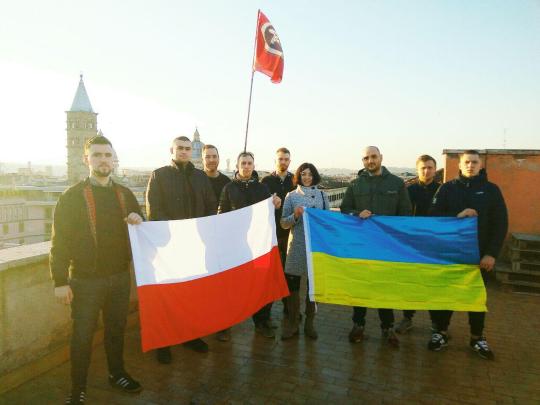

Besides, National Corps has been a participant of the Third Etnofutur Conference, which took place on the 23rd of February in Tallinn. This event is held annually by the youth organization of Estonian People’s Conservative Party (EKRE), Blue Awakening (Sinine Äratus). Traditionally, the strong emphasis has been laid on the conceptual synergy of the nationalist speakers of the Intermarium region. Olena Semenyaka has delivered a speech entitled “Middle Europe in the Age of Caesarism and the Purpose of Ethnofuturism”. In her speech, she mentioned that namely the Azov Movement is the brightest example of Ethnofuturism as a combination of innovative technologies with the policy of protecting ethnocultural identities.

Having referred to Oswald Spengler’s concept of Caesarism as the final period of the historic cycle of the West which began with the first world war, Olena presented Intermarium as space where Old Europe can return to life again entering a new cultural and civilizational turn.
In addition, National Corps sent his representative to support EKRE ahead of parliamentary elections. Fortunately, the allied party showed an exceptionally high result. On February 24, Olena, also traditionally, participated the celebration of the independence of Estonia and anniversary torchlight parade.

On March 30, 2019, Olena Semenyaka spoke at the Pan-Scandinavian Scandza Forum founded by Fróði Midjord. The forum addressed the problems of the lacking freedom and imported chaos in modern Western societies (”Anarcho-Tyranny”). Having investigated the issue in the context of Ernst Jünger’s criticism of neo-totalitarian police state, as well as the need to put modern audiovisual technologies into service of our own historical visions, she called the region of Central and Eastern Europe the space of political freedom where it would be possible to develop the paneuropean infrastructure for such purposes. The event was also attended by members of Swedish Democrats and Alternative for Sweden.
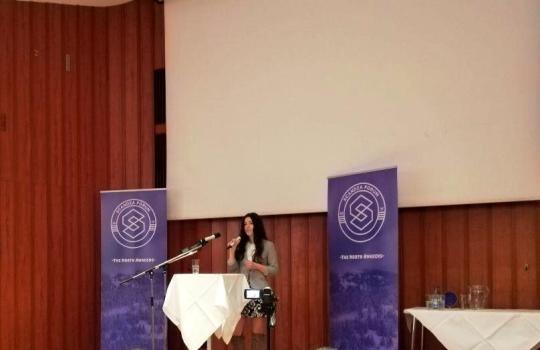
After the Scandza Forum, Olena Semenyaka became the guest of the “Anton och Jonas” video program during which she discussed the course of the Maidan Revolution, the reasons for the geopolitical confrontation with Russia, the milestones of the formation of the Azov Movement and the Intermarium project. Her interlocutors were Anton Stigermark, the representative of the Alternative for Sweden party, the author of the “Memetic Warfare”, who also participated in the MMA tournament at the Kyiv Reconquista Club, and Jonas Nilsson, coordinator of the Boer Project, also the MMA enthusiast and a former instructor of the Azov regiment, which hosted a lot of Swedish military volunteers.
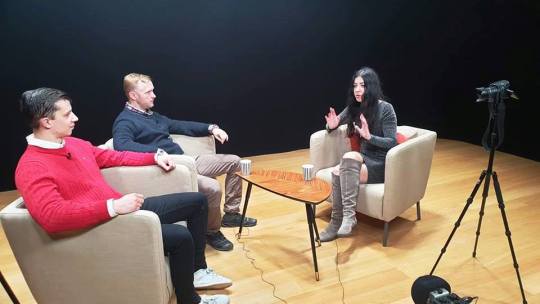
Finally, on April 6, 2019, the National Corps, represented by the international secretary and coordinator of the Intermarium project Olena Semenyaka, took part in the Awakening II Сonference in the Finnish city of Turku. At this conference, Olena made a presentation "Finnish-Ukrainian Cooperation Then and Now As Seen by National Corps” during which she discussed the diplomatic cooperation of Finland with the Hetmanate and the UPR in the previous century, in particular, thanks to the ardent Finnish advocate of the Ukrainian national liberation movement Hermann Gummerus, as well today’s step-by-step integration program of the Intermarium Support Group.
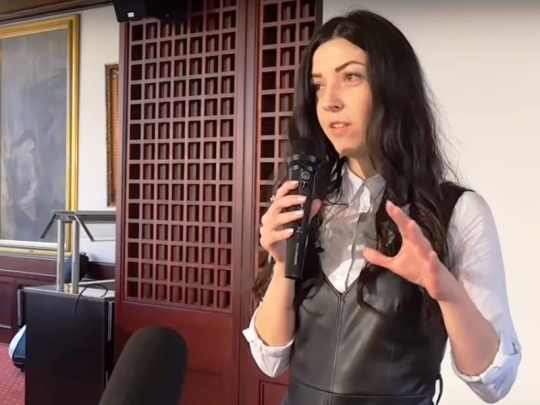
In addition to foreign speakers and guests, the event was visited by members of the Finnish identitarian organization Suomen Sisu and the youth branch of the Finns Party. Finnish audience, which had its own experience of Russian-Finnish wars, was fascinated by the natural geopolitical vector towards Intermarium. It is worth to mention that the Finns Party has lined up 39 parliamentary seats out of 200 during the recent election.
It is planned that Olena Semenyaka will take part in Forum Prisma Actual on May 4, 2019, in Lisbon, on the invitation of Escudo Idetitario, Portuguese identitarian organization. Along with developed Spanish branch of the paneuropean Reconquista movement, Portuguese patriots couldn`t help resonating with the cause of the novel Ukrainian “conquistadors.”
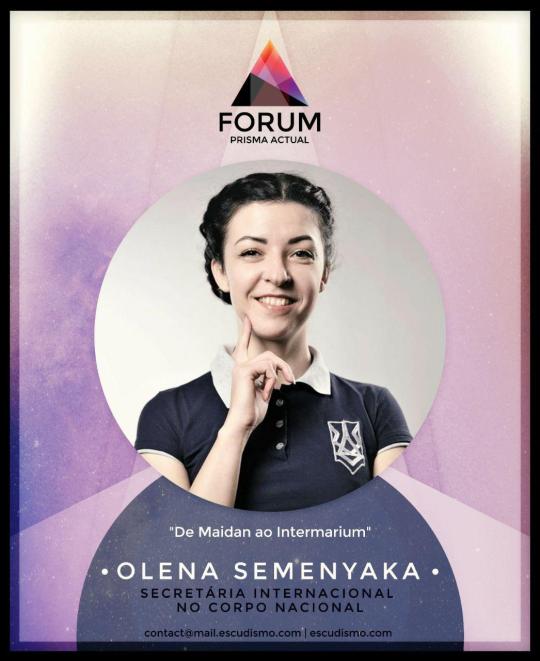
Among the Southern European countries, the great interest in Azov’s activity is shared by Greece whose patriotic audience also feels the cultural and geoeconomic affinity towards the project of Intermarium and invite National Corps to their land.
However, the priority of the Intermarium Support Group for the second half of 2019, of course, is holding the Fourth International Conference bringing the regional European integration to the new level. According to preliminary plans, the conference will be held in Zagreb, a center of the Adriatic angle of Intermarium.
#National Corps#AZOV movement#Andriy Biletsky#Intermarium Support Group#Olena Semenyaka#eugene vriadnyk#Paneuropa#reconquista movement
4 notes
·
View notes
Link
A little over a hundred years ago, Emperor Karl of Austria, his wife Zita and their small children were forced to leave their last refuge in Austria for Swiss exile. Two abortive attempts to regain the Austrian throne led to their exile and his death in Madeira.
Over the following decades the imperial exiles made the best of things, with the heir, Archduke Otto, trying first to catalyse resistance to Hitler on Austria’s part, and then with more success to ensure that the victorious Allies would treat Austria as a victim rather than a perpetrator.
…
Pleasant, more or less, as Austria’s existence after 1955 was, the former imperial lands east of the Iron Curtain did not fare nearly so well – the difficulties of their being hacked apart in 1919 having been exacerbated by war and communism. But when elected a Member of the European Parliament, Archduke Otto never ceased trying to keep their plight before his colleagues’ eyes. Chief organiser of the so-called “Pan-European Picnic” of 1989 – which helped bring down the Wall – he was foremost in calling for the rapid integration into the European Union of Hungary, Slovakia, the Czech Republic, Slovenia, Croatia and the once partly Habsburg Poland.
But in the aftermath of their liberation and incorporation into the EU, a strange phenomenon emerged: they found they had more in common with each other (and in recent years with Sebastian Kurz’s Austria) than with the Western nations. Not only did they share scepticism toward Western Europe’s embrace of abortion and sexual licence, their national cultures – despite the nationalisms that tore them apart – have much in common.
Sociological studies have found that in Poland, Ukraine, Romania and Serbia – those areas that were once part of Austria-Hungary – have a much higher rate of trust in police and courts and less corruption than those that were not. The test-runners have dubbed this “the Habsburg effect”.
It is not only a question of a power vacuum exploited in turn by Hitler and Stalin, created, as Churchill said, by “driving the Habsburgs, Hohenzollerns, Wittelsbachs and the rest off their thrones”. It was disrupting a system that, as such recent studies as Richard Bassett’s For God and Kaiser and Pieter Judson’s The Habsburg Empire conclusively show, worked very well, despite the oceans of ink spent trying to justify its demise over the last century.
…
And what of the House of Habsburg itself in all of this? Otto’s elder son, Karl, ably assisted by younger, Hungary-based brother Georg, is certainly keeping the flag flying through the Paneuropa Union, the Knightly Order of St George, and a host of cultural, political and religious activities throughout the former empire chronicled on his informative eponymous website. Their sisters are also plugging away at similar tasks. Cousin Michael, of the Hungarian branch of the family, is head of the group working for the beatification of Cardinal Mindszenty, while his son, Eduard, is Hungary’s envoy to the Holy See. It is now a large clan, scattered across the globe, but by and large an extremely hard-working one.
The website of the Austrian branch of Paneuropa declares: “The soul of this continent is Christianity. Whoever takes it out of political action, makes Europe a soulless body.” The Europe they would like to see is one that even the hardest of Brexiteers might well like.
But if such a vision is ever to come about, reunion of the Danubian countries would create an entity capable of challenging the secularist elements in Brussels and accomplishing it. As in the past nine centuries, the ties binding this region are not national, but religious, cultural and dynastic. It is fitting that the modern bearers of the name are working steadily in these fields. Anyone hoping for the best for Europe can only wish them success.
1 note
·
View note
Link
europa im transit
trafficjam europe united
covivere zusammenleben
Mittelosteuropa first
sbasiba, спасибо
century20
0 notes
Photo

Nós temos o poder de mudar o mundo. Não escolhemos a situação em que vivemos mas somos NÓS que escolhemos a atitude que temos perante a situação. Escolhe a resistência, o amor, a paz, a união, a compaixão, a ciência, a arte, a liberdade para TODOS... Não deixes que anulem a tua subjectividade! #euvotoeuropa #paneuropa #votopelademocracia #fightforpeace #fightforclimatejustice #fightforabetterworld #fightforjustice #fightforanimalrights #fightforhumanity #fightforlove #govegan #goveganforlove #eleicoeseuropeias2019 #PAN https://www.instagram.com/p/Bx5U4hvDPRv9ut_6fQIUpTGC-GmIKSiV4fAGf80/?igshid=h5sw9wo7lg7w
#euvotoeuropa#paneuropa#votopelademocracia#fightforpeace#fightforclimatejustice#fightforabetterworld#fightforjustice#fightforanimalrights#fightforhumanity#fightforlove#govegan#goveganforlove#eleicoeseuropeias2019#pan
0 notes
Note
Wo wir grad bei conservativer Übernahem der USA sind: die CSU steht einer Organisation nahe, die sich "Paneuropa-Union" nennt, die sich ein Europa ersehnen, das auf christlichen Werten™ basiert, und wo kein Platz ist für u.a. LGBTQIA Menschen und Atheisten.
Uuuund noch ein Grund, diese Partei nicht zu wählen.
34 notes
·
View notes
Text
Il piano Kalergi e la sostituzione etnica in Europa
Il piano Kalergi è una di quelle teorie che, pur sembrando superate, tornano ciclicamente alla ribalta. Ne parliamo oggi dopo le parole del ministro dell'Agricoltura Francesco Lollobrigida al convegno della Cisal. Il ministro ha sostenuto la necessità di incentivare politiche sulla natalità per contrastare la sostituzione etnica. Non è un mistero che queste tematiche siano molto care ad ambienti di destra, sovranisti e suprematisti così come sottolineato in una pagina del sito web del governo. Una contraddizione in termini? Un'affermazione che non si sposa con il ruolo istituzionale?
L'ideale di un'Europa unita
A Richard Nikolaus di Coudenhove-Kalergi si deve il primo progetto di un'Europa unita. Dopo la Prima Guerra Mondiale, il conte austriaco sentì l'urgenza di creare un nuovo ordine europeo. L'unità dell'Europa doveva basarsi prima di tutto sullo stesso spirito e poi su interessi economici comuni. Era questa la strada da seguire per assicurare una convivenza pacifica tra i popoli europei e, di conseguenza, una pace duratura nel continente. La pace in Europa, secondo Kalergi, passava anche per una certa mescolanza di etnie (o, come si diceva all'epoca, di razze). Molto critico verso la teoria di una razza superiore, Kalergi sosteneva che gli uomini nati da genitori di diverse etnie fossero più ricchi di spirito e più propensi a mantenere la pace.
Il piano Kalergi come teoria del complotto
Le sue idee, espresse nelle opere "Paneuropa" e "Idealismo pratico", furono accolte con favore da molte personalità europee dell'epoca: dal Albert Einstein a Sigmun Freud, da De Gasperi a Churchill. Molto meno favore ne incontrò in Gerd Honsik. Il negazionista austriaco vide in quelle parole, opportunamente decontestualizzate, un preciso piano per annullare l'identità europea. Il "meticciato etnico" imposto da Kalergi avrebbe portato al "genocidio" dei popoli europei. Da qui la teoria del complotto sulla sostituzione etnica operata da presunte élite economiche che prende il nome di piano Kalergi.
Nonostante Honsik sia stato riconosciuto come negazionista e condannato due volte per aver negato la tragedia dell'Olocausto come verità storica, la sua idea sul piano Kalergi si è molto diffusa. Trova piena accoglienza in ambienti di destra che la ripropongono in momenti di particolare difficoltà economica. La crisi del 2007 e i corposi flussi migratori dall'Africa e dall'Asia verso l'Europa sono stato e sono ancora momenti cruciali per riproporre lo spettro della sostituzione etnica.
Europa unita
Nonostante lo stravolgimento delle sue idee, Kalergi resta un punto di riferimento nell'europeismo moderno. Mai citato tra i teorici, alcune delle iniziative prese negli anni sull'Europa si ispirano alle sue proposte: la nascita della "Comunità europea dell'acciaio e del carbone" nata nel 1952; l'adozione dell'Inno alla Gioia di Friedrich Schiller su musica della Nona sinfonia di Ludwig van Beethoven come inno dell'Europa. Fu lui a fondare nel 1948 l'Unione Parlamentare europea, che sfocerà nella nascita del Consiglio d'Europa e della sua Assemblea parlamentare (dopo il Congresso dell'Europa a L'Aia nel 1948). Dal 1978 la fondazione "Coudenhove-Kalergi", diventata nel 2008 "European Society Coudenhove-Kalergi", ogni anno premia personalità che si sono distinte per il loro impegno europeista. Per l'Italia, nel 1986, fu premiato Sandro Pertini.
In copertina foto di 👀 Mabel Amber, who will one day da Pixabay
Read the full article
0 notes
Video
185 576 Donauwörth by Florian Martinoff
Via Flickr:
Mit dem "Terratrans/Paneuropa" KLV war die von Lokomotion angemietete 185 576 hier bei Donauwörth auf dem Weg nach Bremen.
1 note
·
View note
Text
Mut zum „Übervaterland“ Europa
Die Paneuropa-Union feierte ihren 100. Geburtstag und schaut dabei in die Zukunft des Kontinents
https://www.die-tagespost.de/politik/mut-zum-uebervaterland-europa-art-233524
0 notes
Photo



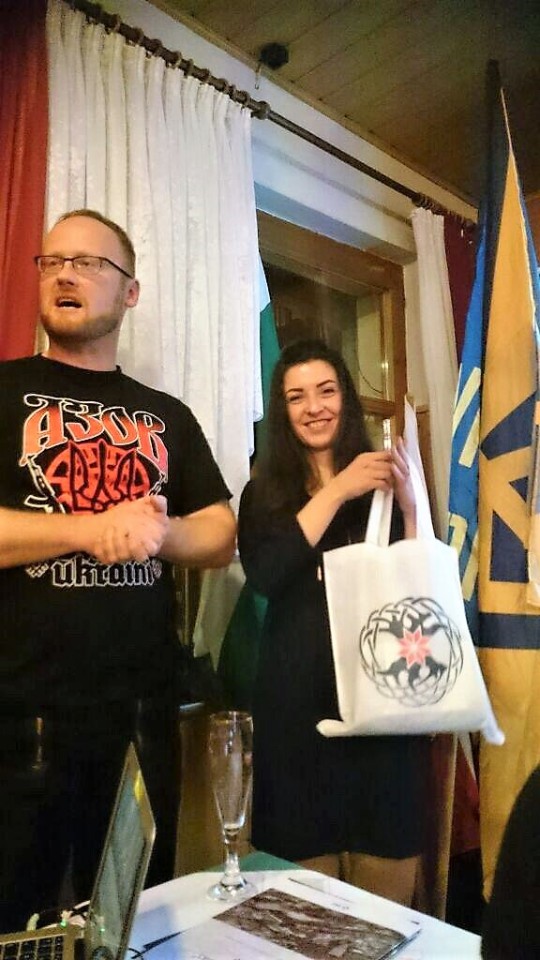
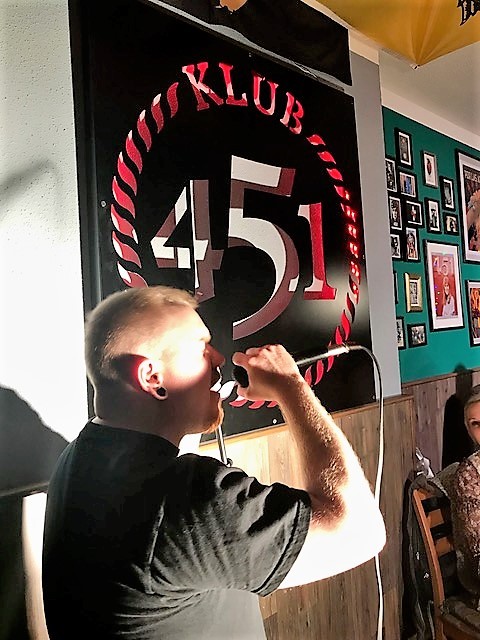
"The Evolution of the Azov Movement" at the event of NPD in Saxon Switzerland
Feb. 16, the activists of the Kraftquell project and the department of NPD in Saxon Switzerland hosted a unique event in this beautiful German land dedicated to the evolution of the rapidly growing Ukrainian Azov Movement.
The lecturer was Olena Semenyaka, International Secretary of National Corps, the parliamentary wing of the Azov Movement. Her speech was supported by video presentations and translated to German with a detailed background information for the local audience. The vivid interest of the listeners was manifested during the questions part of the event. What is remarkable, not only youth was present at the meeting, and the older German generation showed a rare knowledge of the Ukrainian history and state building.
Olena Semenyaka highlighted the origins of the Azov Movement as the Ukrainian nationalist organization of the new generation named The Patriot of Ukraine, which emerged in the Eastern Ukrainian city of Kharkiv and, since its very inception, had a mature paneuropean thinking, as well as regularly conducted paramilitary training. When the Maidan Revolution broke out, members of The Patriot of Ukraine were well-prepared to fight the police, first within the broad national-revoutionary movement of Right Sector, then, after their unalterable leader Andriy Biletsky was released from prison, as the newborn Azov Movement.
Following the path from the war to politics, they formed the Black Corps comprised of the "little black men" as a response to anonymous Russian "little green men" without insignia who annexed Crimea during the so-called democratic referendum on its future fate. The Black Corps operated in Eastern Ukraine, and its first most successful operation was the liberation of half a million city of Mariupol, the second biggest city in the region after Donetsk.
At that time, it has already been the Azov Battalion, the only Ukrainian volunteer battalion which has been converted shortly afterwards into the regiment of the National Guard of Ukraine. If the authorities had provided minimal support for the unit, it would have entered Donetsk, and the only successful counter-offensive operation throughout the entire course of the conflict under conditions of Minsk peace agreements was conducted precisely by the Azov Regiment, namely the release of Shyrokyne.
The logic of the Azov Movement's unfolding was as follows: the Azov Civil Corps, the National Corps party, the paramilitary structure of National Militia, and over 30 projects functioning as independent NGOs, from the education and metapolitics to sport and youth camps.
But the most challenging projects of the Azov Movement, which is well-prepared for the hybrid scenario both at war and in politics, are the geopolitical ones. Olena Semenyaka emphasized that the Intermarium (Adriatic-Baltic-Black Sea) defense union as a platform for the alternative to the EU sovereign Paneuropean union is the main geopolitical program of National Corps. In this context, she referred to the German doctrines of Mitteleuropa, as well as made it clear that National Corps considers Ukraine an heir of the continental mission of "the heart of Europe," Germany, in times of the "iron chancellor" Otto von Bismarck. In turn, the Azov Movement, in her opinion, heavily reminds of the German Freikorps caught between two fires: on the one hand, the Bolshevik invasion in Germany and Baltics, on the other hand, the treacherous Weimar government.
However, Olena Semenyaka concluded to say, precisely the false rivalry of the West and the Russian Federation creates the unique chance for the intended "buffer zone," Eastern Europe, to become the center of the restoration of the all-European geopolitical subjectivity and superpower. After the majority of Russian nationalists fled to Ukraine due to severe "anti-extremist legislation," multicultural agenda and "Nazi" witch hunt in Putin's Russia, it has become obvious that only Eastern and Central Europe, especially Ukraine, remains the space of political freedom and the springboard for ambitious geopolitical projects.
The host of the event was the initiator of the Kraftquell project Thomas Rackow who seized the opportunity to announce the opening of this German-Ukrainian-Norwegian project in Germany. The goal of this, in fact, charity project is to organize a vacation in Germany and Norway for some Ukrainian veteran families and thus to show the European family of peoples in action. In the end of the lecture, Olena Semenyaka received a package of production promoting the Kraftquell project which was made with the support of the excellent metapolitical center in Pirna, Haus Montag, which is coordinated by Thomas Sattelberg.
The event was closed with a fantastic live performance by Phil of FLAK, a famous German RAC band, which, according to the fair observation of the frontman, has long transcended the genre in terms of the scope of the ideological response and the suggested positive alternative. Apart from the classic FLAK in German, he performed the composition in English which was dedicated to the paneuropean solidarity of European nations.
The participants of the meeting eagerly made further cooperation plans for the observable future, which, apart from the Kraftquell project, includes the publishing initiatives and joint international events.
#Pirna#NPD#Haus Montag#Thomas Rackow#Kraftquell#Thomas Sattelberg#NPD Sachsen#Olena Semenyaka#Azov Movement#National Corps#Andriy Biletsky#Intermarium#Mitteleuropa#Paneuropa#FLAK
0 notes
Photo

Paneuropa Podwójna Wersaliki by polish typefoundry Jan Idźkowski similar to Lichte Erbar Grotesk #typespecimen
8 notes
·
View notes
Link
0 notes